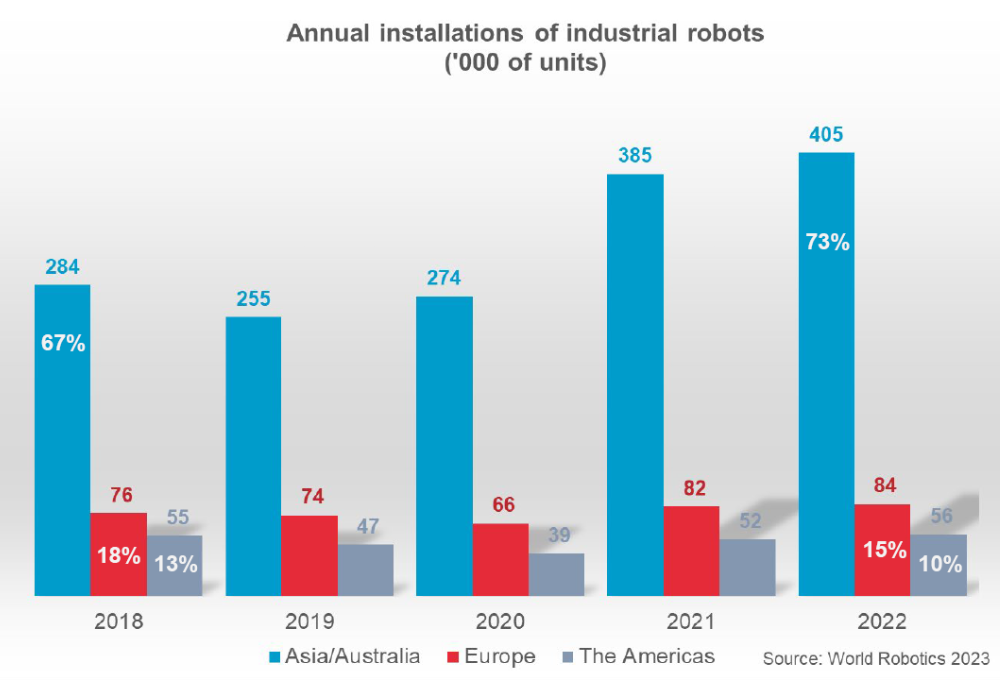"By 2023, the industrial robot market is expected to grow by 7% to more than 590,000 units worldwide."
Marina Bill, president of IFR

The main sectors, automotive and electronics, installed more robots than in 2021. Supply chain disruptions and raw material shortages continued to hamper the completion of projects, but to a lesser extent than in the previous year.
China is by far the largest market in the world. In 2022, annual installations of 290,258 units replaced the previous record of 2021, with an increase of 5%. This increase is even more remarkable given that in 2021 there was a 57% increase compared to 2020.
Following China is Japan, with an increase in robot installations of 9% to 50,413 units. Japan is the predominant robot manufacturing country in the world, with a market share of 46% of global robot production.
Robots in Europe
Europe continues to be the second largest market in the world: more than 70,000 units, an increase of 5% compared to the previous year. Within the European continent, Germany leads the way, being one of the top five markets worldwide, with a 36% market share in the region. Installations in Germany fell by 1% to 25,636 units. Italy follows with a 16% market share in Europe - installations grew 8% to 11,475 units. The third largest market, France, saw growth of 13%, installing 7,380 units in 2022.
On the American continent, installations increased by 8% to 56,053 units in 2022. The United States, the largest regional market, accounted for 71% of installations in America in 2022. The main driver of growth was the automotive industry, which saw an increase in installations of 47% (14,472 units).
The other two major markets on the continent are Mexico, where robot installations grew by 13% (6,000 units), and Canada, where demand fell by 24% (3,223 units).